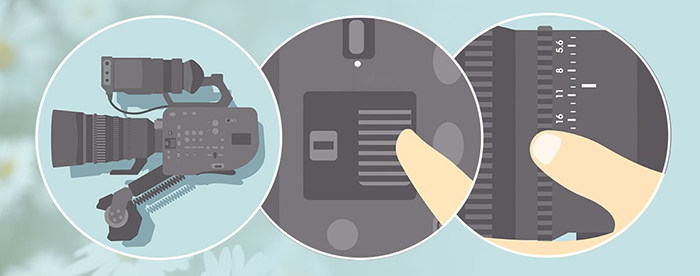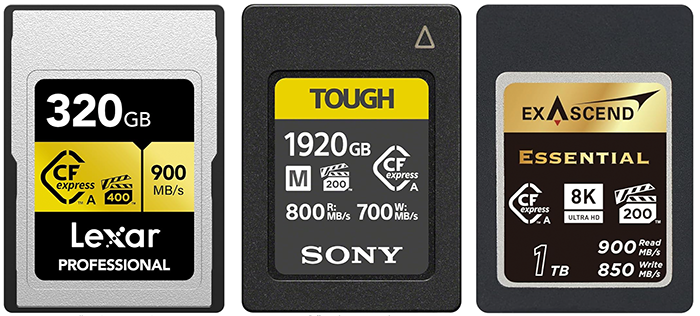Zeiss explains “What photographers should know about the (Sony-Zeiss) partnership”
Zeiss posted an interesting blog entry to explain what photographers should know about the Sony-Zeiss partnership. They do that because photographers regularly ask what the differences and similarities are between ZEISS and Sony/ZEISS lenses. I repost the most important part of the answer to some of the most frequent questions:
Are lenses from ZEISS or Sony/ZEISS identical?
The lenses of the two lines are different, but optimized for the corresponding system. Because ZEISS’s know-how goes into every lens, both versions are highly sophisticated from a technical standpoint. Differences can be found in the focusing mechanism: for example, whereas Sony/ZEISS lenses always have autofocus, ZEISS offers a mix of autofocus lenses (e.g. ZEISS Batis) and manual focusing lenses (e.g. [shoplink 38831 ebay]ZEISS Loxia[/shoplink]). For the lenses of camera systems from other manufacturers, ZEISS relies mainly on manual focusing (ZE, ZF.2). Lenses that have the same focal length differ in their internal construction.
Who develops the lenses?
ZEISS lenses are developed exclusively by ZEISS. ZEISS also determines the features of the lenses, such as their focal length and internal construction, in line with the company’s product strategy. Sony/ZEISS lenses are jointly developed by ZEISS and Sony. ZEISS supports Sony throughout the optical design and development process and then tests and approves the prototypes. Finally, ZEISS determines the test specifications for serial production.

Where are the lenses manufactured?
ZEISS still picture lenses are manufactured in Japan and ZEISS cine lenses in ZEISS’s factory in Oberkochen/Germany. It is still economical for ZEISS to produce its cine lenses in Germany due to the more sophisticated skills required to manufacture these special lenses for the film industry. In order to satisfy the much higher global demand for still picture lenses, ZEISS has established a partner network in the optics industry. During the entire development and production processes, ZEISS experts ensure that the high quality standards for which ZEISS has been famous for over 165 years are met.


Sony/ZEISS lenses are manufactured by Sony in factories across Asia. In these factories Sony uses lens testing equipment that has been developed and manufactured by ZEISS. An example is the MTF-tester K8, a versatile and compact instrument used to measure the modulation transfer function of photographic lenses, or similar systems, at an infinite object distance.

Who is responsible for customer service?
Owners of ZEISS lenses can rely on an established worldwide service network where they can send their ZEISS lenses for inspection and repairs. ZEISS also offers an online and telephone central support desk. ZEISS places great emphasis on providing customers with a personalized service, delivered by qualified experts in the company. The inspection and repairs of Sony/ZEISS lenses are managed by the Sony Service Centers directly.
Is the quality of both lines identical?
In all its brand partnerships, ZEISS sets the technical and quality standards to which partners, such as Sony, must adhere. ZEISS regularly audits the production process of Sony/ZEISS lenses in Sony’s factories. ZEISS experts examine the production processes, management systems and measuring installations. ZEISS certifies the suppliers and provides all the equipment that is needed to ensure product quality, including the equipment of third-party suppliers.


Who sells the lenses?
Sony/ZEISS lenses are sold exclusively through Sony’s distribution channels. ZEISS lenses are sold exclusively through ZEISS’s own sales channels in all German-speaking regions and internationally. ZEISS also ensures that its local dealers have the required professional qualifications. Dealers who sell the company’s products are regularly trained by ZEISS experts.
Local ZEISS dealers can be found here: www.zeiss.com/photo/dealer
Product strategy
Sony and ZEISS each follow their own product strategies depending on market and quality needs. With their outstanding image quality, fast autofocus and innovative features, the new ZEISS Batis lenses are in a class of their own. The ZEISS Batis 2/25 and ZEISS Batis 1.8/85 are the first full-frame autofocus lenses for Sony’s E-mount cameras. The Batis 2/25 and ZEISS Batis 1.8/85 lenses have an OLED display which shows the distance and depth-of-field range – a true innovation. As a result, a photographer can also compose creative images in the dark. For more information about ZEISS Batis lenses, please visit www.zeiss.com/batis

Freedom of composition in photography was the guiding principle in developing the ZEISS Loxia lenses – a family of manual focus lenses for the E-mount full frame. They are optimized for digital sensors and electronic viewfinders as they are used in Sony’s α 7 mirrorless cameras and feature a mechanical aperture setting and the mechanical deactivation of the click stop (de-click) for ambitious videography.
Various other ZEISS lenses, for example those from the ZEISS Touit family for cameras with APS-C sensor and E-mount, compete with Sony/ZEISS lenses. Both companies will continue to develop their respective product portfolios, and in doing so offer customers even more choice.
This puts photographers in a comfortable position: they can choose their desired lenses from a broad portfolio provided by both brands in order to meet their specific requirements.
–
Many Thanks Zeiss for writing that!
Both Batis lenses are now available for preorder in USA and Europe (UK/Germany)
Zeiss Batis 85mm f/1.8 lens in US at Adorama, Bhphoto. In Eu at Amazon DE, WexUK. In Asia at Digitalrev.
Zeiss Batis 25mm f/2.0 lens at Adorama, Bhphoto. In EU at Amazon DE, WexUK. In Asia at Digitalrev.
In Europe and Asia the Loxias can be found in Stock via [shoplink 36456 ebay]eBay sellers (Click here)[/shoplink] and Digitalrev (Click here).
–
P.s.: Thanks Colin!


